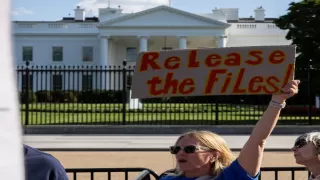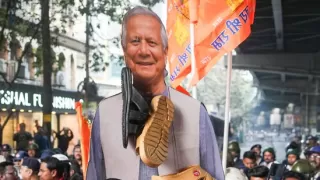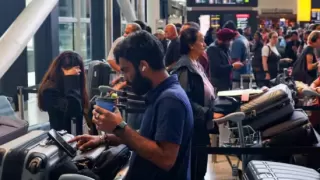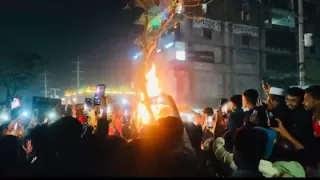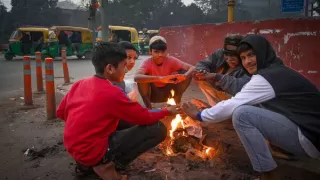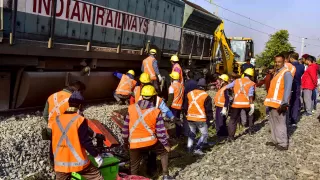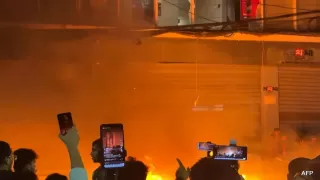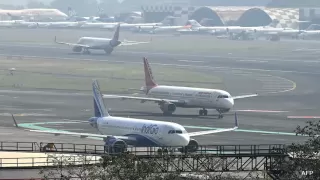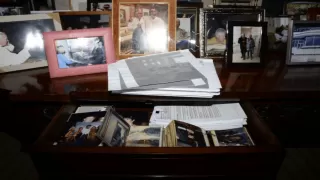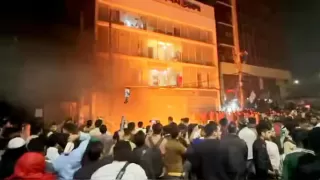In a shocking revelation, sources have disclosed details of a chilling terror plot involving 32 cars that were allegedly part of a coordinated plan to target multiple locations in Delhi. The plan, reportedly orchestrated as a revenge attack for the Babri Masjid demolition, was set for December 6, a date marking the historic event. Authorities have confirmed that the Hyundai i20 involved in Monday's Red Fort blast was one of several vehicles intended to carry explosives and execute a serial attack across the city.
The discovery of these vehicles has sent ripples across law enforcement agencies and the public alike, highlighting the meticulous planning and dangerous intent of the terrorist cell. Investigators are now combing through evidence that links multiple cars, including the Maruti Suzuka Brezza, Maruti Swift Dzire, and Ford EcoSport, to the conspiracy. Preliminary findings suggest that these vehicles were deliberately chosen for their old registration and resale history, making them difficult to trace by authorities. Yet, all four cars identified have now been located, providing key leads to ongoing investigations.
The terror plot has underlined the growing threat posed by organized terror groups operating under the radar in India. Intelligence agencies are warning that the scale of the planned attacks could have caused significant casualties had the explosives not detonated prematurely. The incident has reinforced the urgency of proactive security measures across Delhi and other vulnerable areas, especially in anticipation of high-profile dates and gatherings.
Vehicles Linked to the Red Fort Terror Plot
The investigation so far has identified four key vehicles used by the terror operatives. The Hyundai i20, which exploded near the Red Fort, carried a mix of high-grade explosives and ammonium nitrate fuel oil. The Ford EcoSport, with registration number DL10 CK 0458, was found abandoned in Faridabad, Haryana, with a young man, yet to be identified, in custody. The Maruti Swift Dzire, seized on Monday, contained an assault rifle and ammunition. The Maruti Brezza was discovered on the campus of the Al-Falah School of Medical Sciences and Research Centre, which has emerged as the operational hub of the terror cell.
Authorities believe that these vehicles were meant to execute a six-phase attack, targeting six strategic locations across Delhi. DNA tests have confirmed that Umar Mohammed, alias Umar un-Nabi, drove the i20 that exploded. Officials suggest that the blast occurred prematurely due to panic after arrests of accomplices, including Adil Ahmad Rather, Mujammil Shakeel, and Shahina Saeed. The discovery of nearly 3,000 kg of explosives and firearms at Faridabad and Jammu & Kashmir locations has revealed the scale of the operation and the level of coordination involved.
Pakistan-Based Jaish-e-Mohammed Behind the Conspiracy
Investigators have traced the terror cell back to Jaish-e-Mohammed, a Pakistan-based terror group. The operatives adopted a new modus operandi, posing as white-collar professionals, particularly doctors, to gain local trust and divert suspicion. CCTV footage captured Rather putting up posters praising the Jaish terror group in Nowgam, Jammu & Kashmir, which helped authorities uncover the network. The plot reflects a high level of sophistication and the ability of terror groups to blend into society while preparing large-scale attacks.
The arrest of cell members in Uttar Pradesh and Faridabad has led to unraveling the full scope of the conspiracy. Several operatives were linked to the Al-Falah institution, though the organization has publicly distanced itself, reaffirming its commitment to the nation. Authorities continue to probe potential links and whether other vehicles or operatives remain active in India, highlighting ongoing vigilance in counter-terror operations.
Impact and Security Measures in Delhi
The Red Fort blast has triggered heightened security measures across Delhi. Authorities have increased surveillance at key government buildings, tourist sites, and transport hubs to prevent further incidents. The police, intelligence agencies, and anti-terror squads are collaborating closely to ensure rapid response to any suspicious activity. The discovery of multiple vehicles intended for attacks has underscored the need for tighter checks and intelligence-led operations to neutralize threats before they materialize.
Citizens are being urged to report any suspicious behavior, and security forces have intensified patrolling near sensitive locations, including the Red Fort, metro stations, and crowded public areas. The government has also warned of possible follow-up attacks, emphasizing that vigilance is critical in the coming weeks, especially as the anniversary of December 6 approaches.
Details of the Planned Attack Phases
Officials reveal that the terror plan was structured in six phases, targeting multiple locations simultaneously to maximize impact and chaos. The early detonation of the i20 at the Red Fort forced a deviation from the original plan, but authorities believe that the remaining vehicles were intended to deliver explosives to other high-profile locations in Delhi. Investigations are ongoing to trace all accomplices and neutralize any remaining threats.
The plot reflects the adaptability of terror groups in improvising when operations are disrupted. The premature blast prevented potential large-scale casualties, but it also exposed the vulnerabilities in urban security that terrorists often exploit. Intelligence agencies are reviewing protocols to prevent similar threats in the future.
Casualties and Immediate Aftermath
Thirteen people were killed in the Red Fort blast, including Umar Mohammed, confirmed through DNA testing. Authorities are investigating the exact chain of events leading to the premature detonation. The blast also caused widespread panic, traffic disruptions, and temporary closure of nearby metro stations. Emergency services and security forces responded promptly, preventing further damage and securing the area for forensic investigations.
Medical and rescue teams worked through the night to provide assistance to injured civilians and contain any remaining hazards from the explosives. The incident has prompted discussions on enhancing urban counter-terror readiness and rapid response strategies, especially in historically significant and crowded areas.
Broader Implications and Future Threat Assessments
The discovery of this terror plot has broad implications for national security and counter-terrorism strategy in India. Analysts suggest that the use of ordinary vehicles as carriers of explosives demonstrates a shift toward low-profile, high-impact attacks. The integration of operatives into professional sectors indicates the need for enhanced monitoring and intelligence-sharing mechanisms across states.
Authorities are now assessing potential vulnerabilities, including transportation networks, public institutions, and densely populated urban centers. The ongoing investigations are expected to provide insights into preventing similar conspiracies, tracking terror finances, and identifying radicalization patterns that facilitate such operations.
Conclusion: Vigilance and National Security
The Red Fort terror plot, involving 32 vehicles and coordinated phases, underscores the persistent threats facing India from organized terror groups. While authorities have successfully prevented a larger disaster, the incident highlights the need for constant vigilance, community awareness, and rapid response capabilities. The nation mourns the lives lost but remains resolute in strengthening security measures and dismantling terror networks.
As investigations continue, security agencies are working tirelessly to ensure the safety of Delhi residents and protect critical infrastructure. The exposure of this plot also serves as a stark reminder of the evolving tactics employed by terrorists, requiring India’s law enforcement and intelligence agencies to adapt swiftly and decisively in an ever-changing threat landscape.
Also Read: Dhurandhar Trailer Update: Postponed After Delhi Blast







